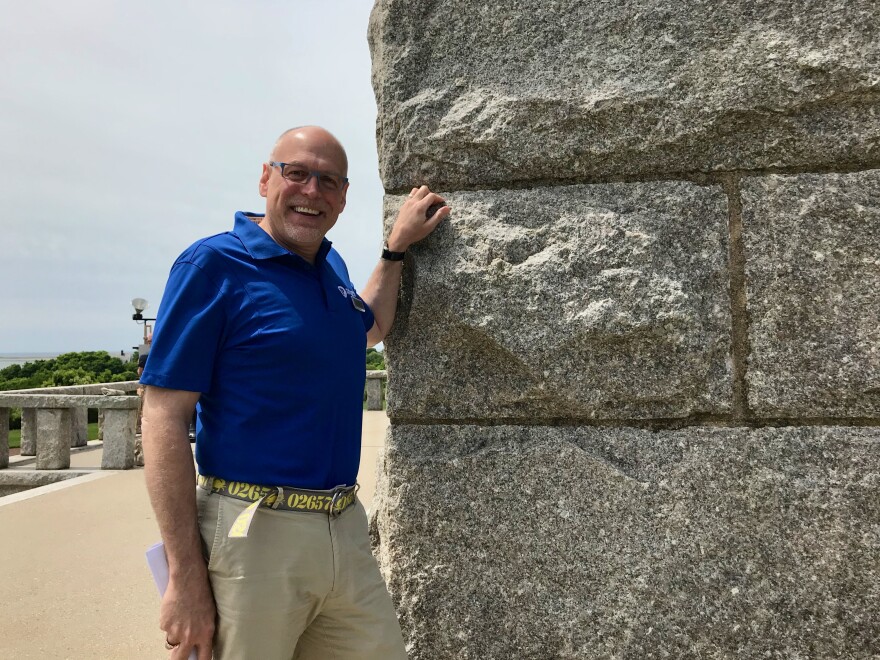Provincetown is already gearing up to celebrate the 400th anniversary of the Pilgrims’ landing in 1620. Many of the celebrations will center around the Pilgrim Monument, which sits atop High Pole Hill, affording a spectacular view of the town and harbor below.
In 1902, the town of Provincetown donated land to the Cape Cod Pilgrim Memorial Association to build a monument commemorating the Pilgrims arrival. It was built between 1908 and 1909 – the tallest all-granite structure in the U-S.
Plymouth gets most of the Pilgrim publicity, but Provincetown was their unplanned first stop. They’d set out for the Jamestown colony in Virginia, but ocean currents brought them much further north to New England. The Pilgrims arrived in Provincetown harbor on November 11th, 1620.
“You had 102 individuals who were displaced – displaced themselves on purpose – but they were displaced mainly because they were run out of where they were living. And they were looking for a new freedom,” said David Weidner, Executive Director of the Pilgrim Monument and Museum.

A large bronze plaque on the front of the monument, now tinted green with age, commemorates a document the Pilgrims signed on the day they arrived, known as the Mayflower Compact.
“Before they got off the boat, one of their critical elements that they wanted to do was to organize themselves around a document, a governing document, if you will,” said Weidner. “The Mayflower Compact was created in order for them to know who was in charge, know how to deal with indiscretions and problems, very much like the forerunner to our Bill of Rights, our Constitution. All of those documents created a compact, a promise, a trust.”
It appears that the rank-and-file passengers aboard the Mayflower had at least some say in the Compact.
“The imagery and some of the narratives, some of the text we see, says that they did have an engaged conversation and dialog of all the people on the ship,” said Weidner. “The fact that everyone had signed it, all agreed to the rules and the regulations of what the Compact meant.”
The Pilgrims eventually determined that Provincetown was too inhospitable a place to settle, so they sailed across Cape Cod Bay to Plymouth, where they set up a permanent colony. But their brief time in Provincetown was nonetheless significant.
“The landing point of democracy, we believe happened here in Provincetown in 1620 with the landing of the Mayflower Pilgrims,” Weidner said. “Our dedicatory monument is a testament to the future of civil society and a future for the history of many, many more people coming to our shores to appreciate true social justice.”
The cornerstone for that monument was laid by Theodore Roosevelt, who had secured much of the funding from the government to build the structure. During construction, granite quarried from Maine was shipped into the harbor, and then up to the building site.
“It was quite an interesting process. A railway was actually created from the harbor to bring it all up to the point of the grounds, right where our existing flagpole is,” said Weidner.
The monument was dedicated with great fanfare in 1910 by President William Howard Taft, who sailed into Provincetown harbor aboard the federal yacht, dropping anchor at the spot where the Pilgrims were believed to have anchored the Mayflower 290 years before.
That festive atmosphere will be reborn in 2020, with numerous activities celebrating Provincetown’s role as the Pilgrims’ first stop in the new world.







